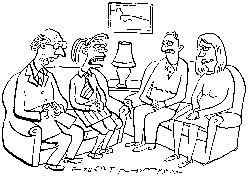There’s a dog-leg road junction a mile up the lane off which I live that’s made dangerous by the pub that partially obscures traffic from the right.
There’s a dog-leg road junction a mile up the lane off which I live that’s made dangerous by the pub that partially obscures traffic from the right. It’s safer in the dark when headlights show up from far off. I approached it in the second before daybreak the other morning, reckoning I wouldn’t have to stop (it’s a Give Way junction) because I’d see any lights in good time. There were lights and I saw them but I pulled out anyway and made it safely across, so nothing happened. Yet as I did it I knew I shouldn’t. So did the oncoming white van man who flashed me. He was right to be annoyed.
That set me thinking about my driving: what are my faults? It’s well known from surveys that most drivers rate themselves as above average. If I’m honest, I probably would, too. But I know I’m sometimes prone to cut it a bit fine like that because I’ve caught myself doing it before. It’s not misjudgment of speeds and distances as much as reluctance to change my mind once I’m committed to a course of action. An aspect of personality, therefore, rather than purely driving skill. You see it in many of us in many areas, ranging from deciding where to go on holiday, to arguing whether the dashing Beatty or the cautious Jellicoe was more at fault in the Battle of Jutland, to doctors disagreeing over medical diagnoses and surgical procedures. Journalists and politicians often find it particularly difficult to acknowledge evidence that they are wrong, unless they come up with it themselves. Academics may be even worse, judging by the protracted bitterness of their disputes (perhaps, as Henry Kissinger said, because the stakes are so low).
Another driving fault I’m uneasily aware of is plain inattention. That’s not only a question of having driven from A to B in a daydream without any memory of how I did it, but of distractions. Derek Bell, seven times Le Mans winner, once gave me a vivid driving lesson in a Bentley Arnage on a South African racetrack which began with his saying, ‘When you’re driving, you should only be driving.’ Recalling that sometimes stops me fiddling with the radio, adjusting the seat, admiring the sunset, gazing at car showrooms, studying the satnav or the map, groping for the bar of chocolate in the cubby-box, unwrapping same, staring in disbelief at the engine temperature gauge or wondering at the errant antics of London cyclists. Not the mobile, note: I can barely walk, let alone drive, while fiddling with the wretched thing and generally don’t turn it on unless for emergencies or for calls pre-booked, in writing.
The lesson, I guess, is that the more interest you take in your driving the better and more safely you do it. Musing thus prompted me to release £2.50 for a copy of the 77-year-old Highway Code, which I haven’t read thoroughly since passing my test back in the days of Red Flag motoring. In some ways it has changed gratifyingly little — full of the same nannying good sense — though it’s more comprehensive than it used to be. I regret the lack of ‘Look right, look left, look right again’ in the so-called Green Cross Code that tells pedestrians how not to get run over and was surprised by the ornithological diversity of pedestrian crossings. Zebra crossings we all know, and Pelicans just about (signal controlled, operated by pedestrians, with a flashing warning phase), but Puffins (no flashing) and Toucans (crossings shared with cyclists)? Like so many official publications, parts of it seem to be written for children.
It sensibly distinguishes between things you must do — quoting the relevant laws — and things you should do, which are advisory (though the latter may be used as evidence in court proceedings). There’s even some attempt at humour, as when it tells us that cyclists must not ride on pavements and must obey traffic lights. You could have a laugh about that with London’s Metropolitan Police, particularly those supposedly enforcing the law outside Parliament.
Despite the fact that the legal measurement of distance in this country is miles and yards, it specifies that you must be able to read a number plate at 20 metres. I’d forgotten it’s not compulsory to use headlights at night on a road with street lighting, though a separate section says you should (not must) in built-up areas. Slightly confusingly, we must use sidelights between sunset and sunrise (when those occur depends upon where you are, how high you are and in which direction you’re travelling), while the hours of darkness are defined as beginning and ending half an hour after sunset and before sunrise. Surprisingly, it’s illegal to use hazard warning lights while being towed ‘unless you are on a motorway or unrestricted dual carriageway and you need to warn drivers behind you of a hazard or obstruction ahead’. Not many people know that. And, of course, we must obey all the laws at all times.
Next month it’s the launch of the 204mph Bentley Continental Supersports. I have been warned.






Comments